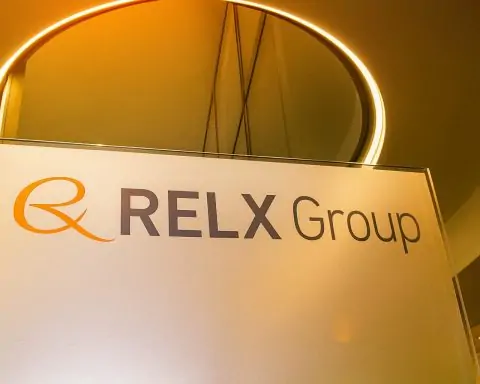- Record highs: Gold recently breached $4,000/oz (peaking around $4,059) and silver briefly topped $51.20/oz – the highest levels since 1980 [1] [2].
- Massive gains: Both metals are on tear: gold is up roughly 50–53% in 2025, silver about 70–75% year-to-date [3] [4]. These rallies dwarf the S&P 500’s ~15% gain and even outperform Bitcoin’s ~30% jump [5].
- Safe-haven demand: Investors are flocking to gold and silver amid a “flight to safety.” Drivers include lingering wars (Middle East, Ukraine), U.S. political turmoil (government shutdown), high global debt and inflation worries, expectations of Fed rate cuts, and a softer U.S. dollar [6] [7]. Central banks are on a gold-buying spree (on pace for ~1,000 tonnes in 2025) [8], reinforcing the bull trend.
- Industrial and supply factors: Silver’s surge is also fueled by strong industrial demand (over 50% of silver is used in tech/solar/electronics [9]) and chronic supply shortages (2025 marks a fifth consecutive year of a global silver deficit [10] [11]). Tight ETF stocks have pushed silver into backwardation, reflecting scarcity [12] [13].
- Profit-taking and pullback: After the mid-October highs, gold and silver eased modestly on news of a ceasefire in the Gaza conflict and traders booking gains [14] [15]. Spot gold dipped just below $4,000/oz and silver to about $50.5/oz by Oct 9 [16] [17]. Analysts view this as a healthy consolidation, not a crash.
- ETF flows & mining stocks: The rally has rippled through markets. The SPDR Gold ETF (GLD) is up about 50% this year [18], and gold-miner funds have exploded (one leveraged miners ETF jumped ~740% YTD [19]). Even individual miners soared – e.g. Barrick Gold rallied above $34 (before a slight pullback to ~$33) [20]. Silver ETFs are in high demand too (the iShares Silver Trust ETF is up ~68% YTD [21]), although acute silver shortages recently forced India’s Kotak Mahindra to halt new silver ETF subscriptions [22].
- Bullish forecasts: Major banks are raising price targets. UBS expects gold around $4,200/oz “in the coming months” [23], and Goldman Sachs projects $4,900/oz by late 2026 [24] [25]. HSBC’s analysts say silver is “on the cusp” of breaking its record and forecast roughly $45–$53/oz into year-end [26] [27]. Veteran strategist Ross Norman notes there are “pretty solid fundamentals behind silver’s move” (rather than just speculation) [28].
Historic Metal Records
Gold and silver have shattered previous price ceilings. In early October 2025, gold rose above $4,000 per ounce – a milestone never seen before [29] [30]. It peaked around $4,059 on Oct 8, a ~50% rally from its ~$2,700 level at the start of 2025 [31]. Silver’s climb has been even steeper: after languishing in the low $30s in January, it shot above $50 mid-October (briefly $51.22) [32] [33]. That is the highest since 1980 and roughly a 70%+ YTD gain [34] [35]. The gold/silver ratio has tightened dramatically (now ~82, down from ~100 earlier in 2025 [36] [37]), reflecting silver’s catch-up. Such historic moves have left markets astonished – Reuters notes gold is on track for its largest annual jump since 1979, far outpacing most assets [38].
Driving Forces Behind the Rally
Analysts point to a “perfect storm” of factors. First, safe-haven demand is surging. Ongoing wars (e.g. Israel–Hamas, Ukraine), geopolitical tensions, and policy uncertainty have made investors wary [39] [40]. Gold and silver are classic hedges against turmoil. As one Pictet strategist notes, in a “paradigm shift” and perceived currency debasement, “people always move to gold” as the “ultimate hedge” [41]. During uncertain times, every hint of peace (like the Oct 9 ceasefire news) can trigger profit-taking, as speculators “take some gold chips off the table” [42] [43]. But these are seen as temporary pauses. Allegiance Gold’s Alex Ebkarian calls the breach of $4,000 merely a trigger for profit-taking, stressing the market is now in a “secular bull market” for years ahead [44] [45].
Second, monetary policy and inflation are key. The U.S. Federal Reserve began cutting rates in September (first cut since late 2024) and signals more easing. Lower interest rates reduce the opportunity cost of holding non-yielding gold and silver. TD Securities’ Bart Melek explains: “With interest rates heading lower, gold is more attractive… investors aren’t losing out on higher yields” [46]. In other words, falling real yields make precious metals shine. Fed speakers and minutes hint at additional cuts (the market sees two 25bp cuts likely before year-end [47]), which bolsters the metals’ case. Meanwhile, inflation worries (for example from tariffs) have not disappeared, so gold’s inflation-hedge appeal remains strong [48].
Third, global dollar and reserves. The dollar has weakened from its mid-2025 highs, making greenback-priced bullion cheaper abroad. Central banks have continued hoarding gold: deVere’s Nigel Green calls them the “quiet force behind this climb,” noting they buy “close to one thousand [tons] of gold each year” to diversify reserves [49]. When governments “keep accumulating at this rate, they create a strong foundation” under prices [50]. This institutional demand is massive: official buyers are on track for a record fourth straight year of gold purchases in 2025 [51].
Fourth, industrial demand (for silver). Unlike gold (mostly jewelry and reserves), silver has heavy tech/industrial use [52]. Over half of silver goes into electronics, solar panels, electric vehicles, etc. The boom in renewable energy and electronics has drastically lifted silver consumption. One ING strategist observes that silver’s “dual role as an industrial metal and safe-haven asset has amplified the rally, making 2025 a historic year for silver” [53]. This industrial tailwind, combined with silver’s status as a monetary metal, has supercharged demand.
Finally, supply constraints tighten the market. Silver mining is largely a byproduct of other metals, so output can’t quickly expand. Analysts note the silver market is in its fifth straight year of a structural deficit [54]. Stocks of silver on COMEX and LBMA have declined as investors gobble metal, even triggering record backwardation (spot > futures) – a sign of extreme tightness [55] [56]. A Morgan Stanley note pointed out strong industrial use (China solar) has already put strain on supply, leaving more room to rise. As Marina Smirnova of Sprott notes, silver’s climb is “turning into a breakout”: “supply is thinning, and investors are taking notice” [57].
Market Impact and Investor Response
The bullion surge has rippled through financial markets. Precious-metals ETFs and miners have seen massive inflows. The SPDR Gold ETF (GLD) is up roughly 50% this year [58], and leveraged gold-miner funds have exploded (one micro-cap miners ETF is +740% YTD [59]). Individual miners’ share prices have jumped accordingly: for example, Barrick Gold shares briefly traded near $34 in early Oct [60] (years’ highs) before modestly pulling back. Silver holdings saw similar interest: the iShares Silver Trust (SLV) ETF has gained ~68% in 2025 [61]. India’s Kotak Mahindra even halted new silver-ETF subscriptions due to shortages [62].
By contrast, “risk assets” like stocks have lagged. The S&P 500 is up only ~15% YTD [63] while gold and silver soared 50–70%. Even Bitcoin’s ~30% rally pales next to these metals [64]. This divergence reflects a broad “rally in faithless money,” as one Reuters analysis put it – assets across the board are rising together as faith in fiat weakens [65].
In commodities, copper and industrial metals have also benefited; for example, Reuters noted copper hit a 16-month high alongside gold’s surge [66]. Other precious metals have jumped too: platinum is roughly +80% YTD, outpacing gold [67], and palladium is on a strong run. However, these typically smaller markets are even more volatile.
Short-Term Pullback and Profit-Taking
After these dizzying highs, the market has paused. Traders have booked some profits and the safe-haven bid has briefly softened. Spot gold on Oct 9 fell about 2% to ~$3,970/oz, just below the $4,000 mark [68]. Silver eased to roughly $48–50 (it had been over $51) [69]. This retreat coincided with news of a tentative Gaza ceasefire – one trader observed that speculators “took some gold chips off the table” once the ceasefire “reduced the temperature” in the region [70] [71]. Dollar strength (the USD index hit a two-month high) also dented bullion by making it pricier for foreign buyers [72] [73].
Technical signals showed gold and silver had been “overbought,” triggering routine selling. Bloomberg reports that gold was trading around $3,963 on Oct 10 after a 1.6% drop the previous day [74]. In short, the market is taking a breather after a four-day “breakneck” rally [75].
Despite the pullback, many analysts view it as a temporary consolidation. Allegiance Gold’s Alex Ebkarian emphasizes that the $4,000 threshold “triggered profit-taking… but long-term investors should see it as confirmation that confidence in paper money is eroding” [76]. Even with minor dips, gold remained near $4,030–4,050 on Oct 9 and silver around $50 [77] – still extraordinarily high levels. The consensus is that these pauses “will prove to be the next great buying opportunity” if they occur [78].
Expert Outlook and Analysis
Experts are mostly bullish on the longer-term outlook. UBS’s wealth management team told clients they “think the rally is not yet done” and expect gold around $4,200/oz in the coming months [79]. Goldman Sachs likewise raised its gold target to $4,900/oz by late 2026 [80]. HSBC’s analysts note that silver is “on the cusp” of its old record and should soon clear the $50 barrier, forecasting roughly $45–$53/oz into year-end [81]. Another veteran trader, Ross Norman, believes the “bullish bias remains intact” and the “path to new all-time highs is still wide open” [82] [83], albeit with normal volatility.
Pictet strategists describe gold as a “hedge-everything” asset. State Street’s Michael Metcalfe says we’re at an “inflection point for inflation,” implying ongoing demand for inflation hedges like gold [84]. Pictet’s Arun Sai calls gold an asset that hedges “everything” in the current climate [85]. Even UBS’s Ulrike Hoffmann-Burchardi has remarked that gold’s rise shows “confidence in paper money is eroding,” arguing it’s better to hold gold than cash or bonds now [86].
That said, not all commentary is one-sided. Some caution is warranted. High-profile investor Robert Kiyosaki recently warned of a potential bubble, suggesting precious metals might fall before resuming their uptrend [87]. Silver in particular has a history of sharp reversals: 1980 and 2011 saw $50+ spikes followed by brutal crashes. As a Hindustan Times article notes, silver is “notoriously volatile” and prone to boom-bust swings [88]. Market analysts point out that a sudden reversal in metal markets (especially silver’s thinly traded market) could overshoot on the downside if conditions change [89].
Nonetheless, most institutional strategists emphasize that the dominant forces (debt, inflation, Fed easing) still support metals. They expect a new, higher “floor” for prices in this cycle. According to TS2’s summary, UBS and Goldman’s models imply gold could surpass $4,200–4,500 by 2026, with silver “firmly above $50” [90] if current trends continue. On the flip side, a resurgent dollar or surprise Fed hawkishness could cool the rally [91]. Analysts foresee normal 5–10% swings as the market digests new developments [92] [93].
Conclusion and Investor Takeaways
The gold and silver rally of October 2025 is historic in scope. Record highs and blistering gains reflect deep-seated concerns (geopolitical, economic, and financial) that have driven investors into these traditional safe havens. For now, the bull market looks strong: central banks and investors continue to bid prices up on solid fundamental trends [94].
Investors should be prepared for volatility. As one trader puts it, gold and silver have hit an inflection point ripe for consolidation, with “underlying demand” still intact [95]. Short-term pullbacks – on calm geopolitical news or Fed surprises – are likely. But many analysts view such dips as buying opportunities, especially given the large-scale demand and supply deficits at play.
In practical terms, holdings in precious metals or related assets (ETFs, mining stocks) that were already profitable will need careful reassessment of risk. Those considering new positions should be aware that prices are historically high: vet forecasts and be ready for 5-10% swings [96] [97]. Long-term bulls remain confident: if current drivers persist, gold at $4,200+ and silver well above $50 seem feasible before year-end [98] [99]. But as always, portfolios should balance between upside potential and the chance of a correction, given gold’s 10–15% historical volatility [100] [101].
Sources: Reporting from CNN, Reuters, CBS News, Fox Business and market analysis (including TechSpace2.0) was used to compile this report [102] [103] [104] [105]. All data and quotes are from cited financial news articles and expert commentary.
References
1. ts2.tech, 2. www.fastbull.com, 3. ts2.tech, 4. ts2.tech, 5. ts2.tech, 6. ts2.tech, 7. www.cbsnews.com, 8. ts2.tech, 9. ts2.tech, 10. ts2.tech, 11. www.reuters.com, 12. ts2.tech, 13. www.reuters.com, 14. ts2.tech, 15. www.reuters.com, 16. ts2.tech, 17. www.reuters.com, 18. ts2.tech, 19. ts2.tech, 20. ts2.tech, 21. www.fastbull.com, 22. ts2.tech, 23. ts2.tech, 24. ts2.tech, 25. www.cbsnews.com, 26. ts2.tech, 27. www.cbsnews.com, 28. ts2.tech, 29. ts2.tech, 30. ts2.tech, 31. ts2.tech, 32. ts2.tech, 33. ts2.tech, 34. ts2.tech, 35. ts2.tech, 36. ts2.tech, 37. ts2.tech, 38. ts2.tech, 39. ts2.tech, 40. ts2.tech, 41. ts2.tech, 42. www.foxbusiness.com, 43. ts2.tech, 44. www.reuters.com, 45. ts2.tech, 46. www.cbsnews.com, 47. www.reuters.com, 48. www.cbsnews.com, 49. www.cbsnews.com, 50. www.cbsnews.com, 51. ts2.tech, 52. ts2.tech, 53. www.fastbull.com, 54. ts2.tech, 55. ts2.tech, 56. www.reuters.com, 57. www.fastbull.com, 58. ts2.tech, 59. ts2.tech, 60. ts2.tech, 61. www.fastbull.com, 62. ts2.tech, 63. ts2.tech, 64. ts2.tech, 65. ts2.tech, 66. www.reuters.com, 67. www.fastbull.com, 68. www.reuters.com, 69. www.reuters.com, 70. www.foxbusiness.com, 71. ts2.tech, 72. www.reuters.com, 73. www.foxbusiness.com, 74. www.bloomberg.com, 75. www.bloomberg.com, 76. www.reuters.com, 77. ts2.tech, 78. ts2.tech, 79. ts2.tech, 80. ts2.tech, 81. ts2.tech, 82. ts2.tech, 83. ts2.tech, 84. ts2.tech, 85. ts2.tech, 86. ts2.tech, 87. ts2.tech, 88. ts2.tech, 89. ts2.tech, 90. ts2.tech, 91. ts2.tech, 92. ts2.tech, 93. ts2.tech, 94. ts2.tech, 95. ts2.tech, 96. ts2.tech, 97. ts2.tech, 98. ts2.tech, 99. ts2.tech, 100. ts2.tech, 101. ts2.tech, 102. ts2.tech, 103. www.reuters.com, 104. ts2.tech, 105. ts2.tech









